
Legat’s loudest cheerleader: venerated Chicago architect closes single-firm career by leaving a legacy of unwavering commitment to growth.
1983. Jeffrey Sronkoski, five years on the job at Legat Architects in Waukegan, Illinois, was project architect for the city’s new public works facility. He had a major deadline the next day. In those days, there were no computers — everything had to be drawn precisely the first time.
Ted Haug, a new employee, said, “I looked at what Jeff had to do and I thought to myself, there’s no way he can get that done in time. I came in the next morning to discover that he had not only completed the drawings but had done so impeccably.”
In the ensuing decades, Sronkoski’s “all in” attitude and focus on quality would inspire his coworkers and set the tone for the firm’s projects.
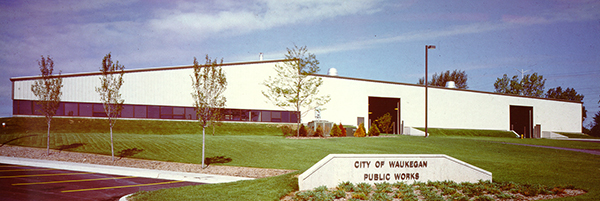
“Whether he was flying halfway across the world, launching a new studio, or staying up late to finish a project, Jeff always had his sights set on the success and growth of Legat Architects,” said Haug, who continues to work at Legat today.
On June 30, 2022, Sronkoski retires from the firm. In an era where the average U.S. employee changes jobs every 4.2 years (according to the Bureau of Labor Statistics), Sronkoski spent the entirety of his 44-year career at Legat.
Sylvia Kowalk, leader of Legat’s interior design team, said, “Jeff’s care and love for Legat Architects shines through in every word he speaks, every professional move he takes, and every decision he makes. He motivates, he inspires, and he has brought everyone along in his journey at Legat.”
Sronkoski has played a key role in elevating the firm from a five-man local operation in a cramped office to a 90-person firm with six Midwestern studios and a global portfolio. During his four-plus decades of leadership, he’s done everything from repeatedly flying to the Pacific Rim to playing softball with the cast of the film “Groundhog Day” in McHenry County, Illinois.
Throughout it all, the animal lover — he had eight cats at one point — and sports enthusiast has pushed for the success of his coworkers, whether he’s known them for decades or days.
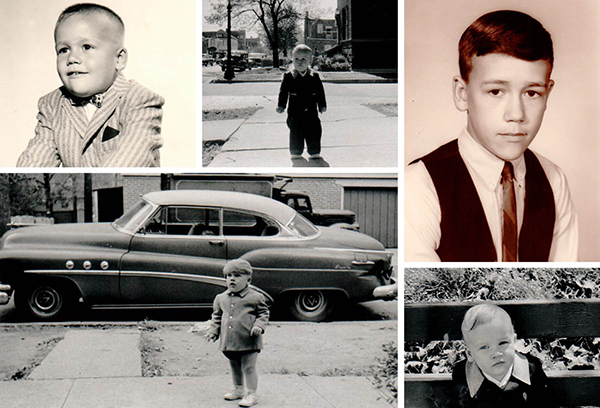
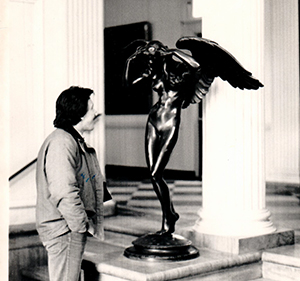
The Making of an Architect
Sronkoski, the second of nine children, was born in Chicago and raised in Elk Grove Village, Illinois. His mother, always willing to help with school projects, instilled in him a love for creative endeavors, while his father’s manual dexterity gave Sronkoski an appreciation for how things fit together — these were the first steps on his architectural journey.
Drafting classes at Grove Junior High School progressed to architectural drawing courses at Elk Grove High School. A high school French teacher sealed the deal when she connected Sronkoski with a job shadowing opportunity at an architecture firm in downtown Chicago’s famed Standard Oil Building (now Aon Center).
When it came time for college, Sronkoski selected the University of Illinois at Urbana-Champaign, one of only two accredited architecture schools in Illinois in the early 1970s. In 1978, he graduated with a Master of Architecture degree.
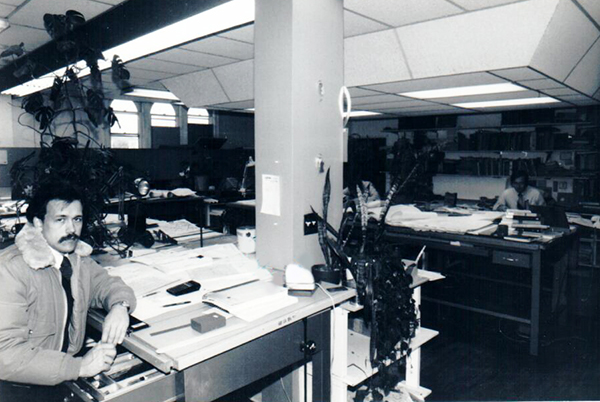
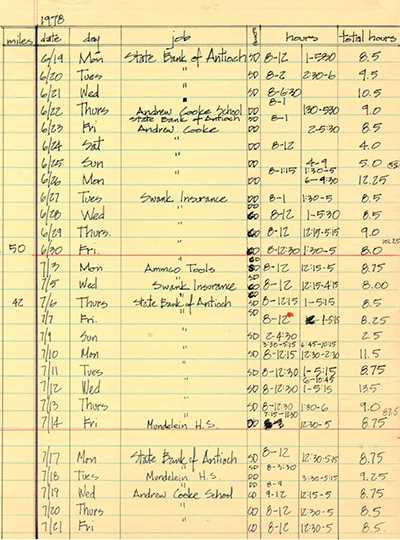
Employee #5: The Early Years
When he was wrapping up graduate studies, Sronkoski received a Chicago Sun-Times clipping his mother had mailed. It showed job openings at Legat Architects, a small firm housed in a converted church in Waukegan, Illinois. A few days later, the U of I architecture department received a letter from the firm stating it was looking for architects — Sronkoski already had his resume in the mail.
The firm was impressed by the swiftness of his response. “I came in for a Saturday interview,” said Sronkoski. “We went to lunch, and I was officially hired.”
Though Legat asked him to start in mid-May, Sronkoski opted to stay in Champaign and study for his architectural licensure exam. He passed and on June 19, 1978, for the first time as a full-time employee, he walked through the doors of the firm to which he’d dedicate his career.
Sronkoski, Legat’s fifth full-time employee, hit the ground running and put in 55 hours his first week. Because the firm had yet to create formal timesheets, he created his own on a yellow pad of paper.
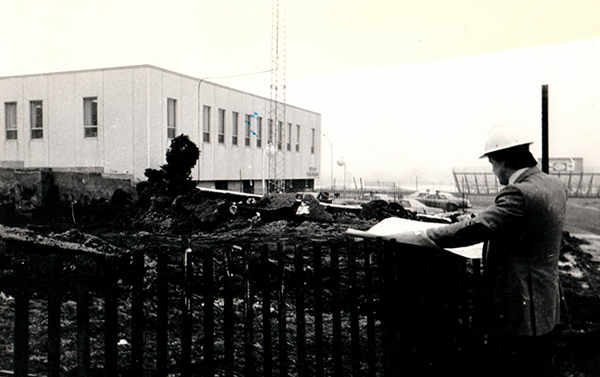
By fall of ’78, Sronkoski was in the thick of things, cranking out projects ranging from schools and park district facilities to offices and banks. All employees worked in a small drafting room, so he learned “through osmosis” by listening to phone conversations.
After the required three-year waiting period, Sronkoski received his architectural license in 1981. At that time, the shaky economy led many of his U of I classmates to move from firm to firm. Sronkoski, however, saw something in this small, relatively unknown firm: the potential for growth. He decided to stay.
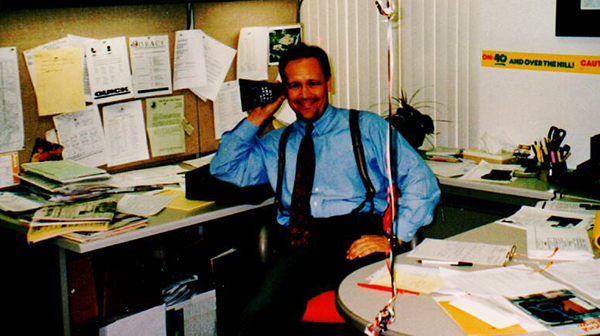
The Value of Relationships: Regional Expansion
After 20 years in Lake County, Legat started its Chicago-area expansion with a new Cook County office in Schaumburg, Illinois in 1984.
Five years later, Sronkoski, still in the Waukegan office, had just bought a new townhome in the neighboring community of Gurnee when the firm’s leadership tasked him with opening Legat’s second branch office. This one would be in Crystal Lake. It was a sensible move: the firm had several high-profile projects happening in McHenry County. The only challenge was that Crystal Lake was 30 miles southwest of Sronkoski’s new home. Always a proponent of living in the community where he works, he bought a second home in Crystal Lake and took on two mortgages until he sold the Gurnee house. That studio grew to 15 people before it merged with the Waukegan studio in Gurnee in 2016.
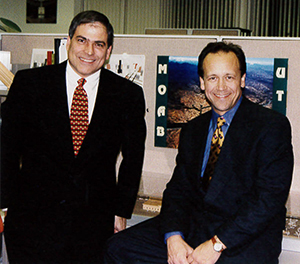
Three years after opening the Crystal Lake location, Sronkoski again moved to launch the firm’s new studio in the DuPage County community of Oak Brook. This time, with just a handful of local clients, the firm did not have as strong a foothold. Nevertheless, thanks to the leadership efforts of Sronkoski and his successors, that studio established a regional clientele that now exceeds 100 organizations ranging from school districts and a community college to government agencies and healthcare clients.
In 1996, Sronkoski opened yet another studio in Chicago’s West Loop, where he spent the remainder of his career. This location helped solidify Legat’s reputation as a global design firm.
In each instance, Sronkoski uprooted his home to be closer to his new studio. He also got to know the people in his region, whether that meant joining the Crystal Lake Chamber of Commerce or the International Visitors Center of Chicago, for which he eventually became board president.
“Jeff was always respectful of the value of relationships,” said longtime coworker Casey Frankiewicz. “He got involved in things that were important to clients, and his clients became his friends.”
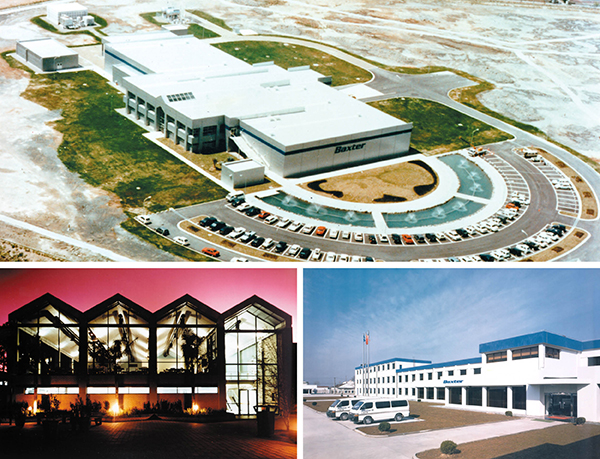
Local Softball, International Connection: Introducing Legat to the World
“How would you like to design a $40 million project in Japan?” Such was the question Bob Johnson, Baxter’s director of international engineering, asked when he called Sronkoski in 1986.
Sronkoski’s response was an enthusiastic “yes” — not only would the commission mark Legat’s first work outside the U.S., but it would also become the firm’s largest project at the time. So began a long-term relationship encompassing 40 Baxter pharmaceutical manufacturing facilities in 30 countries.
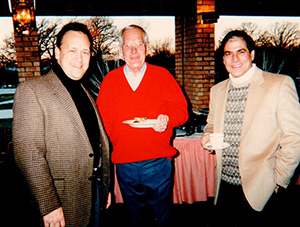
The connection came when Sronkoski attended the wedding of his Waukegan Bally Muck 12-inch softball teammate. There he met that teammate’s father, Bob Johnson, who happened to live in Waukegan.
“My coworkers were always trying to get me into golf to build business relationships,” said Sronkoski. “Once they found out what softball could do, they never bothered me about golf again.”
Incidentally, Sronkoski did go on to take up golf. True to his competitive nature, he recently won “longest putt” in one competition … even though he was in a sling after shoulder surgery.
The Baxter work extended through the 1990s and Sronkoski, who led most of the projects, traveled throughout the world, especially to countries in the Pacific Rim, including 13 trips to Japan alone. This work also brought him to Central and South America, the Middle East, Sweden, and Canada.
“Jeff’s the kind of guy who always had a suitcase with fresh clothes ready to go,” said Ted Haug. “The client would call him up and say, ‘We’re going to so and so. Pack your bags.’ And Jeff loved that.”
The Baxter experience grew the firm’s portfolio and helped Sronkoski grow as an architect. He learned how to design for and respond to different cultures with unique values. Johnson, who often traveled with Sronkoski, became a mentor. During their long flights, Sronkoski absorbed Johnson’s knowledge about business and facilities.
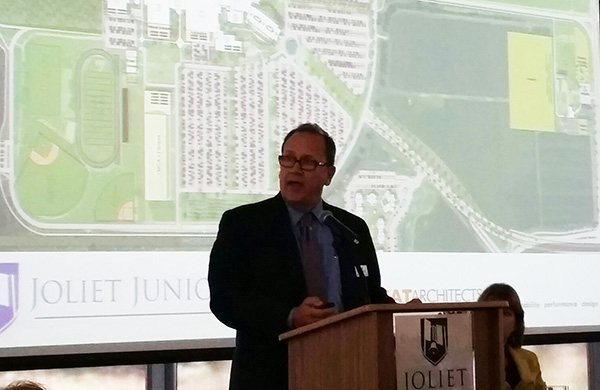
Make Good Projects: Higher Education
In 2006, there was an opening for the leadership of Legat’s higher education practice that needed to be filled quickly. Though his college/university portfolio was not especially large, Sronkoski took on the role. He had, after all, served as project architect for the firm’s first higher education project: a 1983 science wing addition at College of Lake County.
In July 2006, Sronkoski and coworker Michael Lundeen participated in a two-and-a-half-hour interview for Joliet Junior College’s master plan, a document that would set the course for the campus’s growth over the next 20 years. It was Sronkoski’s first interview as head of higher education … and Legat won the commission.
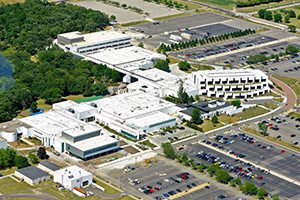
Not only did the master plan lead to the passage of an $89 million referendum for the college, but it also catapulted Legat’s higher education practice. Joliet Junior College tasked the firm with leading five major projects plus multiple renovations stemming from the plan. That work played a critical role in keeping Legat afloat during the Great Recession of 2008. At a time when nearly 25% of Chicago-area architects were unemployed, Legat maintained its full staff.
Dr. Judy Mitchell, who was at that fateful interview and later became the college’s president, worked with Legat on many projects.
“With Jeff at our side,” she said, “I always knew projects would be done and done well. After countless committee meetings and board presentations together, I truly feel like he is part of the JJC family.”
When leadership asked Michael Lundeen to assume the role of associate director of higher education in 2007, he asked Sronkoski what was most important. Sronkoski’s response was to the point: “make good projects.”
Lundeen said, “I learned that without good projects, you don’t have the next projects.”
That simple directive to “make good projects,” coupled with Sronkoski’s emphasis on building strong relationships, propelled Legat’s higher education practice.

When Sronkoski took over the practice, the firm had established itself among community colleges but only had a handful of university clients. Today, its clientele of 40 higher education clients is a 50-50 split between community colleges and universities. Examples of the latter include the University of Illinois’ Urbana-Champaign and Chicago branches, Northern Illinois University, Governor’s State University, Augustana College, University of Iowa, and Ohio University. Following are a few of the firm’s most influential projects during Sronkoski’s tenure as director of higher education:
- College of Lake County’s Science and Engineering Building (Grayslake, Illinois) and Moraine Valley Community College’s Southwest Education Center (Tinley Park, Illinois) became Illinois’s first two community college facilities to achieve LEED Platinum, the U.S. Green Building Council’s highest rating for sustainability and energy efficiency.
- Oakton Community College’s Lee Center for Science and Health Careers (Des Plaines, Illinois) achieved LEED Gold, as well as an Award of Excellence from the American Institute of Architects’ (AIA) Northeast Illinois Chapter.
- The Interprofessional Education Center/College of Pharmacy (North Chicago, Illinois) supported Rosalind Franklin University of Medicine’s focus on uniting disciplines and led to the commission of several other high-profile projects.
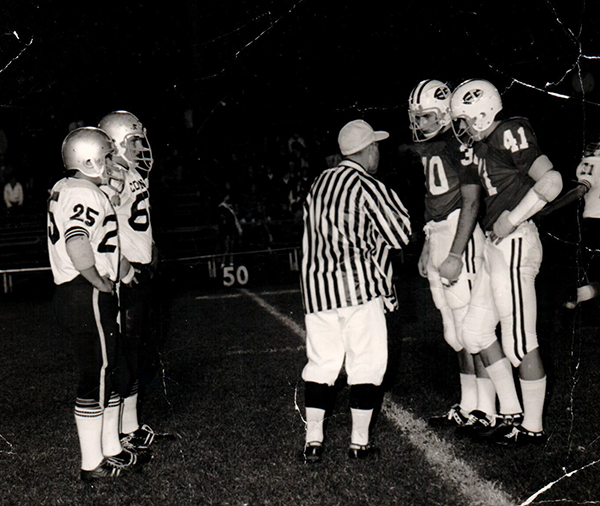
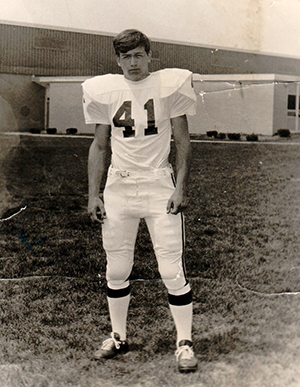
“I Don’t Do Light”: The Competitive Spirit
Though he played baseball, basketball, and football all four years at Elk Grove High School, Sronkoski achieved the most success as a middle linebacker and defensive captain on the football team. During his senior year, his Grenadiers won the mid-suburban league conference, while Sronkoski made the all-conference and all-area teams, and received the Chicago Tribune’s Golden Helmet Award for outstanding achievement in football.
Because Sronkoski was focused on athletics, he never took a gym class in high school. During lunch, he’d meet with the team’s defensive coach to strategize.
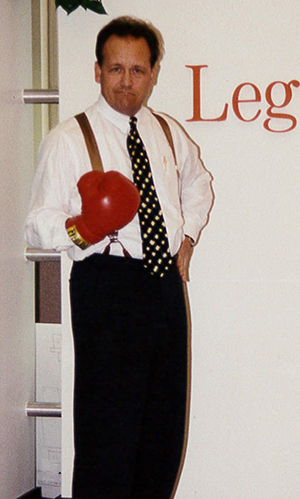
He admits all the high school accolades gave him a big head … so big that the 170-pound 18-year-old decided to “walk on” to the University of Illinois football team. He made the cut. The team’s starting middle linebacker, however, outweighed Sronkoski by 50 pounds, benched pressed 400 pounds, and went on to play professionally for the Minnesota Vikings. Sronkoski did play in two games, but at the end of his freshman year he approached his coach and said, “Architecture will be my future.”
Many of Sronkoski’s coworkers recognize how he carried over his intensity and competitive spirit to the practice of architecture. At one recent meeting, for instance, a coworker suggested “going light.” Sronkoski said, “I don’t do light.”
Sronkoski mixed his love of sports with his architectural career, from the 1980s Bally Muck softball team (which won the 1983 Waukegan Park District city championship) to Friday night co-rec sand volleyball teams.
When Sronkoski was leading the firm’s Crystal Lake studio, an opportunity came up through the city’s chamber of commerce. His studio ended up playing a weekend softball game with the cast of “Groundhog Day,” a movie being filmed in nearby Woodstock. A few years later, a chamber fundraiser gave Sronkoski an opportunity to play one quarter of a basketball game against the Chicago Bears professional football team. Although the Bears won the game, Sronkoski, who “fielded a team of ringers,” insists his team outscored the Bears in their quarter.
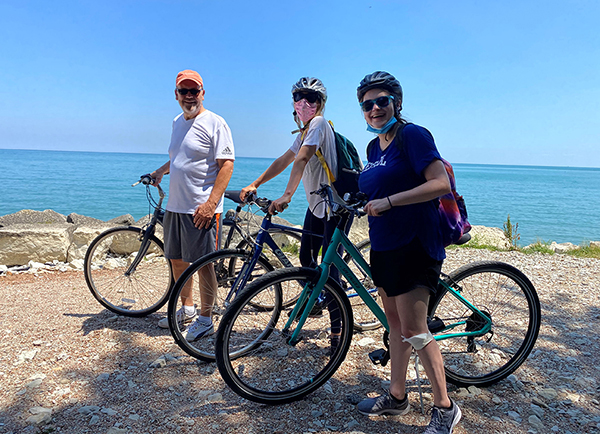
The Business of Respect
Three days after starting at Legat’s Chicago studio, Rachel Wiesbrock got a note at her desk. “See me. Jeff.”
Wiesbrock, having just graduated from Illinois Institute of Technology, approached his desk with trepidation. He had a copy of her resume and wanted to talk about her career goals, plus he invited her to participate in an accessibility panel at Joliet Junior College.
As it turns out, on her first day, Wiesbrock had told Sronkoski of her interest in accessible design for people with disabilities.
“I was surprised that someone so highly respected in the profession would not only make a young professional like me feel welcome but also show interest in helping me pursue my goals.”
Justin Banda, another member of the Chicago studio, adds, “Jeff is one of Legat’s loudest cheerleaders for those just beginning their architectural careers.”
Banda remembers leaving an interview for a project, and members of the Legat team sensing that another firm got the job. “Despite that,” said Banda, “Jeff made of point of telling each member of the interview team something they’d done well. Getting a handshake and an ‘attaboy’ from Jeff is something that never fails to make my day.”
Sronkoski’s influence extends to those who’ve worked with him for many years. Perhaps no Legat employee has worked as closely with Sronkoski as Michael Lundeen, who joined the firm in 1992.
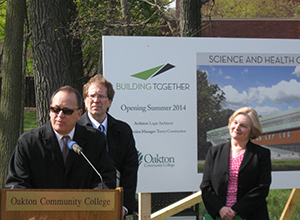
The duo started working together in the Oak Brook studio in 1994. “I remember giving Jeff my drawings on a Saturday for a Monday deadline,” said Lundeen. “He’d spend all night doing a check set and when I got there on Monday morning, I’d have sheets on my desk and all over the floor with his markups.”
During one trying time in Oak Brook, Lundeen’s computer was on the fritz … slow, crashing, the typical problems. He was using a coworker’s Pentium computer two hours a day to get his work done.
Finally, Lundeen told Sronkoski, “My computer stinks. It’s a piece of junk.”
One month later, everyone in the firm had Pentium computers.
“Jeff modeled professionalism, loyalty, and patience for me,” said Lundeen. “He’s a father figure who’s always had my back. And when I wanted to get a point across, he listened.”
Jody Boyce, leader of Legat’s marketing department, commented on the way Sronkoski has connected to her team, whether that means picking up a carless employee on the way to work, staying up late with the team to finish a proposal, or joining members of the team for a bike ride along Lake Michigan.
She said, “If someone is feeling overwhelmed, he listens and he gets it. He has a great heart.”
When he learned that Boyce’s animal-loving young son was undergoing chemotherapy, Sronkoski gave him a wrapped book about animals and sent weekly photos of animals he saw during his early morning walks in Lincoln Park.
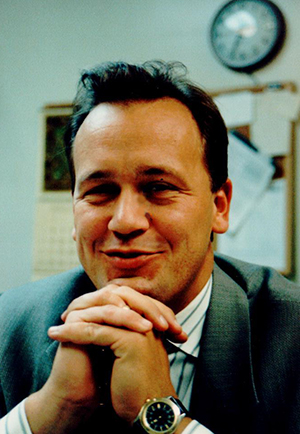
Seeking Higher
In the early ’80s, Casey Frankiewicz, new to Legat, gazed up the ladder stretching to the roof of a Waukegan school. He needed to climb it to do field measurements. But there was one problem: Frankiewicz was afraid of heights.
Fortunately, someone had already climbed the ladder. Jeff Sronkoski peered over the roof’s edge and gently encouraged his coworker to ascend the ladder. Frankiewicz made it, on that day and on many other occasions.
Many years later, Sronkoski devised the slogan “Seeking Higher.” Though it was meant to capture the aspirations of his higher education practice, the phrase encapsulates what Sronkoski did for Legat’s employees, and for many architects and interior designers who’ve gone on to work at other firms throughout the world.
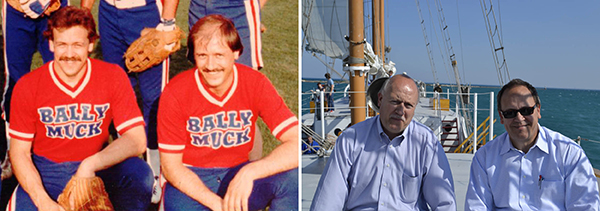
“Jeff demanded precision, clarity, and completeness, and he always advocated creativity and strong design” said Frankiewicz, who went on to work with Sronkoski for 40 years. “He’s at the foundation of what Legat became. He’s the coach who constantly encouraged us to reach higher.”
In 1997, Sronkoski became one of several firm owners as part of a transition. As a member of the firm’s board since 1997 and chairman since 2015, he has helped steer the firm through times of economic prosperity and through tumultuous times. He will continue serving the board in his retirement.
“Legat has always valued the thoughts and ideas of our people and put them into practice,” said Sronkoski. “This is why I have made this organization my life’s work. This is how we will keep growing.”
Contact us or comment below to share your experiences with Jeffrey.


